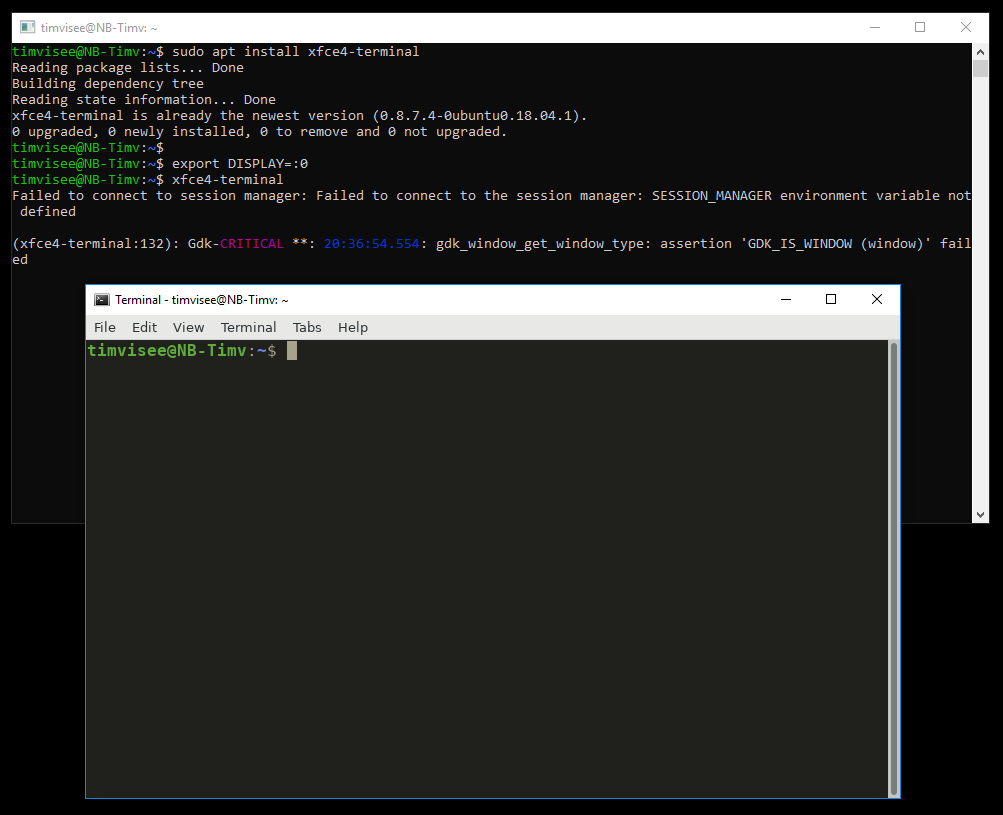

So, even if you need the default font and color, you can again edit the. And, just for the sake of restoring the settings back, you should keep a backup of the PS1 environment variable (copy-paste what’s in it by default) to a text file. Unless you’re sure what you’re doing, do not change anything. You can access the file by simply typing: nano ~/.bashrc bashrc file (this is a configuration file that loads up every time you load up a session). So, to make this a permanent change, you need to add it to. If you close the session, you will lose the customization. The above command that I mentioned temporarily customizes the bash prompt for the current session. So, just keep in mind the codes for customization and play around with it till you’re sure you want this as a permanent change. This is how your bash prompt will look like after typing the command:Īs you can notice, the color customization is the same no matter the order. You just need to type in the following to change the color and font: PS1="\e\h:\w\a\$]"

However, you can tweak the font and color of the bash prompt ( :~$) using commands. Tip 5: NOT RECOMMENDED: Changing the font and color of the bash prompt (for advanced users) Similarly, you can also change your username, but it requires some additional configuration that includes killing all the current processes associated with the active username, so we’ll avoid it to change the look/feel of the terminal. To permanently change the hostname, you need to type in: sudo hostnamectl set-hostname CUSTOM_NAME So, when you restart, it will revert to the default. However, this will be applicable only for the current sessions. You now know some cool tweaks on opening web URLs on the Linux command-line without directly going to the web browser’s GUI app.To change the hostname, you can type in: hostname CUSTOM_NAME You could alternatively use your browser name as part of the Linux command for opening the web page URL you are targeting:įor Google Chrome web browser: $ google-chrome ĭespite the error messages on the terminal on executing these alternative commands, your specified web URL should open without any issues. The execution of the x-Alternative Commands to Open URL Its command syntax can be represented in the following manner: $ x-www-browser URL_OF_TARGETED_WEB_PAGEįor demonstration, let us try to access another random web page on the LinuxShellTips website. The x-www-browser CommandĮven though the x-www-browser command might not exist in the Linux man-pages ($ man x-www-browser) of the Linux operating system distribution you are using, it is equally effective in redirecting a user to a specified web URL on their default web browser. The use of the sensible-browser command is fully supported in Debian-based Linux operating system distributions like Linux Mint and Ubuntu. The execution of the sensible-browser command should redirect us to the specified URL on the default web browser.

Its implementation can be referenced from the following command syntax: $ sensible-browser URL_OF_TARGETED_WEB_PAGEįor instance, we can access a random LinuxShellTips website URL in the following manner: $ sensible-browser '' The sensible-browser CommandĪs per the Linux operating system man pages, the sensible-browser command can be used to execute sensible decisions regarding a default web browser application that can be used to open a targeted web URL.

The execution of the xdg-open command will open the specified URL on your default web browser application. Its usage can be demonstrated via the following command syntax: $ xdg-open TARGETED_WEB_URLįor instance, to open the LinuxShellTips home page from the Linux command-line interface, we will execute the following command. As per the Linux man page, the xdg-open command opens a file or URL via the user’s preferred/default file application or browser application.


 0 kommentar(er)
0 kommentar(er)
